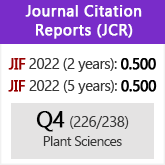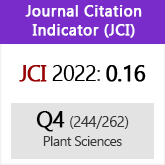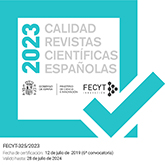Ribosomal ITS diversity among the European species of the genus Hydnum (Hydnaceae)
DOI:
https://doi.org/10.3989/ajbm.2221Keywords:
Hydnum repandum, H. rufescens, DNA-sequences phylogenetic relationships, morphological traits, nrDNA, intraspecific variabilityAbstract
Several morphological species of the genus Hydnum L. are known to occur in Europe, but little molecular evidence exists to confirm the exact number and delimitation of the species. The present study seeks to investigate the genus Hydnum through sequence analysis of the nuclear ribosomal ITS regions and through morphological studies. The DNA sequences phylogenetic analysis revealed high diversity among the ITS region sequences in H. repandum (two clades) and H. rufescens (six clades) while the specimens of H. albidum, H. umbilicatum and H. ellipsosporum formed one and clearly separated clade per morphological species. Phylogenetic distances among the recognised species and the obtained morphologically unsupported clades are comparable and support the idea of several new, yet undescribed species. The intraspecific variability in the sequence data among phylogenetic species is generally low. Detailed morphological analysis of putative informative morphological characteristics could not support any of the observed non-monophyletic DNA-sequences clades within H. repandum or H. rufescens, and the proper use of names is not yet clear. Similar intraspecific variation has also been observed in many other ectomycorrhizal genera and could be explained by intensive speciation within variable groups under the influence of various factors (niche effect, ectomycorrhizal partner selection).
Downloads
References
Agerer, R., Kraigher, H. & Javornik, B. 1996. Identification of ectomycorrhizae of Hydnum rufescens on Norway spruce and the variability if the ITS region of H. rufescens and H. repandum (Basidiomycetes). Nova Hedwigia 63(1-2): 183-194.
Ainsworth, G.C., Sparrow, F.K. & Sussman, A.S. 1973. The fungi. An Advanced Treatise (Volume IV B. A taxonomic review with keys: Basidiomycetes and Lower fungi). Academis Press, NY and London.
Cetto, B. 1976. I funghi dal vero. 2. Arti Grafiche Sa-turnia, Trento. Chevallier, F.F. 1826. Flore Générale des Environs de Paris. Vol. 1. F. Jeune, Paris.
Courtecuisse, R. & Duhem, B. 1995. Mushrooms & Toadstools of Britain & Europe (Collin Field Guide). Harpers Publishers, London.
Daniëls, P.P. 2002. Estudio biosistemático de los Gomphales (Basidiomycota, Fungi) ibéricos. Doctoral thesis Univ. Complutense Madrid. 300 pp.
Di Marino, E., Scattolin, L., Bodensteiner, P. & Agerer, R. 2008. Sistotrema is a genus with ectomycorrhizal species – confirmation of what sequence studies already suggested. Mycological Progress 7(3): 169-176. doi:10.1007/s11557-008-0562-4
Doyle, J.J. & Doyle, J.L. 1990. A rapid DNA isolation procedure for small quantities of fresh leaf tissue. Phytochemical Bulletin 19: 11-15.
Farris, J.S. 1989. The retention index and the rescaled consistency index. Cladistics 5: 417-419. doi:10.1111/j.1096-0031.1989.tb00573.x
Felsenstein, J. 1985. Confidence limits on phylogenies: an approach using the bootstrap. Evolution 39: 783-791. doi:10.2307/2408678
Focht, I. 1996. Ključ za glive. 4th edition. Naklada Naprijed, Zagreb.
Fries, E.M. 1821. Systema mycologicum. Vol. 1. Lund.
Gardes, M. & Bruns, T.D. 1993. ITS primers with enhanced specifity for basidiomycetes – application to the identification of mycorrhizae and rusts. Molecular Ecology 2: 113-118. doi:10.1111/j.1365-294X.1993.tb00005.x PMid:8180733
Gerhardt, E. 1997. Der grosse BLV-Pilzführer für unterwegs: über 1200 Arten, über 1000 Farbfotos. BLV Verlagsgesellschaft GmbH, München, Wien, Zürich.
Gill, M. & Steglich, W. 1987. Progress in the chemistry of organic natural products. Edition Springer Verlag, Wien New York. PMid:3315906
Giraud, T., Refrégier, G., Le Gac, M., de Vienne, D.M. & Hood, M.E. 2008. Speciation in fungi (Review). Fungal Genetics and Biology 45: 791-802. doi:10.1016/j.fgb.2008.02.001 PMid:18346919
Grebenc, T., Piltaver, A. & Kraigher, H. 2000. Establishment of the PCR-RFLP library for Basidiomycetes, Ascomycetes and their ectomycorrhizae on Picea abies (L.) Karst. Phyton, Annales rei Botanicae 40(4): 79-82.
Grebenc, T., Al Sayegh-Petkovšek, S., Pokorny, B. & Kraigher, H. 2006. Detection of point mutations in selected genome regions from sporocarps of heavy metal exposed Hydnum repandum and Clitocybe nebularis as putative indicator species. In: Dolenc Koce, J., Vodnik, D. & Dermastia, M. (eds.), 4th Slovenian Symposium on Plant Biology with International Participation, Ljubljana, September 12-15, 2006. The Slovenian Society of Plant Physiology, Ljubljana. pp. 152-153.
Hall, D. & Stuntz, D.E. 1971. Pileate Hydnaceae of the Puget Sound area. I. White-spored genera: Auriscalpum, Hericium, Dentinum and Phellodon. Mycologia 63: 1099-1128. doi:10.2307/3757988
Harrington, T.C. & Rizzo, D.M. 1999. Defining species in the fungi. In: Worrall, J.J (ed.), Structure and Dynamics of Fungal Populations. Kluwer Press. Dordrecht, The Netherlands. pp. 43-71.
Harrison, K.A. & Grund, D.W. 1987. Preliminary keys to the terrestrial stipitate hydnums of North America. Mycotaxon 28(2): 419-426.
Holmgren, P.K. & N.H. Holmgren. 1998. Index Herbariorum: A global directory of public herbaria and associated staff. New York Botanical Garden’s Virtual Herbarium. http://sweetgum.nybg.org/ih/
Horton, T.R. 2002. Molecular approaches to ectomycorrhizal diversity studies: variation in ITS at a local scale. Plant and Soil 244: 29-39. doi:10.1023/A:1020268020563
Huelsenbeck, J.P. & Ronquist, F. 2001. MRBAYES: Bayesian inference of phylogenetic trees. Bioinformatics 17(8): 754-755. doi:10.1093/bioinformatics/17.8.754 PMid:11524383
Huelsenbeck, J.P., Rannala, B. & Masly, J.P. 2000. Accommodating phylogenetic uncertainty in evolutionary studies. Science 288 (5475): 2349-2350. doi:10.1126/science.288.5475.2349 PMid:10875916
Huhtinen, S. & Ruotsalainen, J. 2006. Variability of Hydnum rufescens in Finland: three taxa hidden under one name - and one appearance? Karstenia 46: 17-24. www.treebase.org/treebase/ (15.01.2009).
Iotti, M., Amicucci, A., Bonito, G., Bonuso, E., Stocchi, V. & Zambonelli, A. 2007. Selection of a set of specific primers for the identification of Tuber rufum: a truffle species with high genetic variability. FEMS Microbiology Letters 277(2): 233-231. doi:10.1111/j.1574-6968.2007.00963.x PMid:18031344
Jülich, W. 1984. Kleine Kriptogamenflora. Bd.2. Pilze b. Basidiomyceten Teil 1. Die Nichtblätterpilze, Gallertpilze und Bauchpilze. Gustav Fischer Verlag. Stuttgart. New York.
Kåren, O., Högberg, N., Dahlberg, A., Jonsson, L. & Nylund, J.E. 1997. Inter- and intraspecific variation in the ITS region of rDNA of ectomycorrhizal fungi in Fennoscandia as detected by endonuclease analysis. New Phytologist 136: 313-325. doi:10.1046/j.1469-8137.1997.00742.x
Kirk, P.M., Cannon, P.F., David, C.J. & Stalpers, J.A. (eds.). 2001. Dictionary of fungy. 9th Edition. CABI Bioscience, Oxon, UK.
Kirk, P.M., Cannon, P.F., David, J.C. & Stalpers, J.A. 2003. www.indexfungorum.org, (last visited on 01st September 2008).
Kluge, A.G. & Farris, J.S. 1969. Quantitative phyletics and the evolution of anurans. Systematic Zoology 18: 1-32. doi:10.2307/2412407
Kraigher, H., Javornik, B. & Agerer, R. 1995. Ectomycorrhizae of Lactarius lignyotus on Norway spruce, characterized by anatomical and molecular tools. Mycorrhiza 5(3): 175-180. doi:10.1007/BF00203334
Kreisel, H. 1969. Grundzüge eines natürliches Systems der Pilze. Jena, Germany. Gustav Fischer Verlag/Cramer.
Larget, B. & D.L. Simon. 1999. Markov chain Monte Carlo algorithms for the Bayesian analysis of phylogenetic trees. Molecular Biology and Evolution 16: 750-759.
Maas Geesteranus, R.A. 1971. Hydnaceous fungi of the Eastern Old World. Verhandelingen der Koninklije Nederlandse Akademie van Wetenschappen, afd. Natuurkunde, Tweede reeks 60(3): 1-176.
Maas Geesteranus, R.A. 1975. Die terrestrischen Stachelpilze Europas (The terrestrial hydnums in Europe). Verhandelingen der Koninklije Nederlandse Akademie van Wetenschappen, afd. Natuurkunde, Tweede reeks 65: 1-127.
Marchand, A. 1973. Champignons du nord et du midi. Les meilleurs comestibile. Société mycologique des Pyrénées Méditerranéennes, Perpignan.
Martín, M.P. & García-Figueres, F. 1999. Colletotrichum acutatum and C. gloeosporioides cause anthracnose on olives. European Journal of Plant Pathology 105: 733-741. doi:10.1023/A:1008785703330
Martín, M.P. & Sánchez-Cuixart, A. 1996. Thin layer chromatography patterns of Rhizopogon species and their possible use as a taxonomic criterion. Revista Catalana Micologia 19: 91-98.
Martín, M.P., Kårén, O. & Nylund, J.-E. 2000. Molecular ecology of hypogeous mycorrhizal fungi: Rhizopogon roseolus (Basidiomycotina). Phyton, Annales rei Botanicae 40(4): 135-141.
Moncalvo, J.-M., Nilsson, R.H., Koster, B., Dunham, S.M., Bernauer, T., Matheny, P.B., Porter, T.M., Margaritescu, S., Weiß, M., Garnica, S., Danell, E., Langer, G., Langer, E., Larsson, E., Larsson, K.-H. & Vilgalys, R. 2006. The cantharelloid clade: dealing with incongruent gene trees and phylogenetic reconstruction methods. Mycologia 98(6): 937-948. doi:10.3852/mycologia.98.6.937 PMid:17486970
Ostrow, H. & Beenken, L. 2004. Hydnum ellipsosporum spec. nov. (Basidiomycetes, Cantharellales) – ein Doppelgänger von Hydnum rufescens Fr. Zeitschrift fuer Mykologie 70(2): 137-156.
Page, R.D.M. 1996. TreeView: An application to display phylogenetic trees on personal computers. Computer Applications in the Biosciences 12(4): 357-358. PMid:8902363
Peck, C.H. 1902. Hydnum umbilicatum Peck. Bulletin of the New York State Museum 54: 953.
Petkovšek, V. & Vrščaj, D. 1998. Hydnum spp. In: Poler, A. (ed.), The list of the fungi from Slovenia. ZGDS, Ljubljana. p. 34.
Pine, E.M. Hibbett, D.S. & Donoghue, M.J. 1999. Phylogenetic relationships of cantharelloid and clavarioid Homobasidiomycetes based on mitochondrial and nuclear rDNA sequences. Mycologia 91: 944-963. doi:10.2307/3761626
Rodríguez, F., Oliver, J.F., Marín, A. & Medina, J.R. 1990. The general stochastic model of nucleotide substitution. Journal of Theoretical Biology 142: 485-501. doi:10.1016/S0022-5193(05)80104-3
Rogers, S.O. & Bendlich, A.J. 1985. Extraction of DNA from milligram amounts of fresh, herbarium and mummified plant tisue. Plant Molecular Biology 5: 69-76. doi:10.1007/BF00020088
Spiers, A.G. & Hopcroft, D.H. 1994. Comparative studies of the poplar rust Melanospora medusea, M. larici-populina and their interspecific hybrid M. medusae-populina. Mycological Research 98: 889-903. doi:10.1016/S0953-7562(09)80260-8
Stropnik, S., Tratnik, B. & Seljak, G. 1988. Naše gobje bogastvo (plate 451). Mladinska knjiga, Ljubljana (in Slovene).
Swofford, D.L. 2002. PAUP*. Phylogenetic Analysis Using Parsimony (*and Other Methods). Version 4. Sinauer Associates, Sunderland, Massachusetts.
Taylor, J.W., Jacobson, D.J., Kroken, S., Kasuga, T., Geiser, D.M., Hibbet, D.S. & Fisher, M.C. 2000. Phylogenetic species recognition and species concepts in fungi. Fungal Genetics and Biology 31: 21-32. doi:10.1006/fgbi.2000.1228 PMid:11118132
Vogler, A.P. & DeSalle, R. 1994. Evolution and phylogenetic information content of the ITS-1 region in the tiger beetle Cicindela dorsalis. Molecular Biology and Evolution 11: 393-405. PMid:8015434
White, T.J., Bruns, T., Lee, S. & Taylor, J. 1990. Amplification and direct sequencing of fungal ribosomal RNA genes for phylogenetics. In: Innis, M.A., Gelfand, D.H., Sninsky, J.J. & White, T.J. (eds.), PCR Protocols. A Guide to Methods and Applications. San Diego, Academic Press. pp. 315-322.
Whiting, M.F.J., Carpenter, J.C., Wheeler, Q.D. & Wheeler, W.C. 1997. The Strepsiptera problem: phylogeny of the holometa bolous insect orders inferred from 18S and 28S ribosomal DNA sequences and morphology. Systematic Biology 46: 1-68. PMid:11975347
Winka, K., Ahlberg, C. & Eriksson, O.E. 1998. Are there lichenized ostropales? Lichenologist 30(4-5): 455-462.
Downloads
Published
How to Cite
Issue
Section
License
Copyright (c) 2009 Consejo Superior de Investigaciones Científicas (CSIC)

This work is licensed under a Creative Commons Attribution 4.0 International License.
© CSIC. Manuscripts published in both the printed and online versions of this Journal are the property of Consejo Superior de Investigaciones Científicas, and quoting this source is a requirement for any partial or full reproduction.All contents of this electronic edition, except where otherwise noted, are distributed under a “Creative Commons Attribution 4.0 International” (CC BY 4.0) License. You may read here the basic information and the legal text of the license. The indication of the CC BY 4.0 License must be expressly stated in this way when necessary.
Self-archiving in repositories, personal webpages or similar, of any version other than the published by the Editor, is not allowed.

















